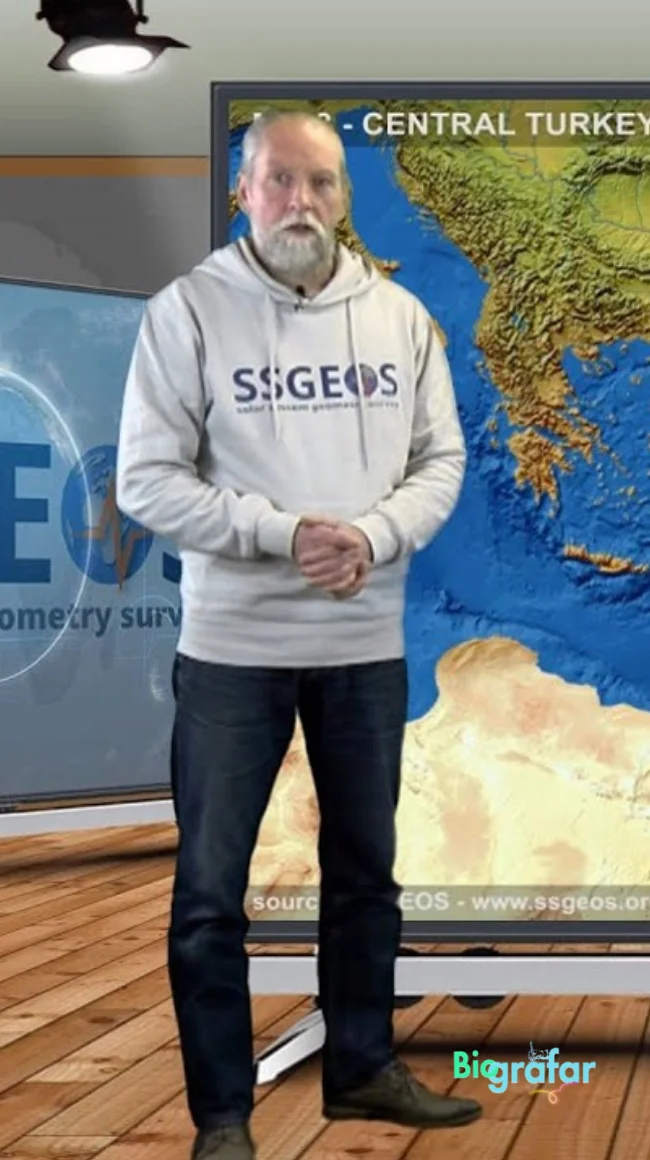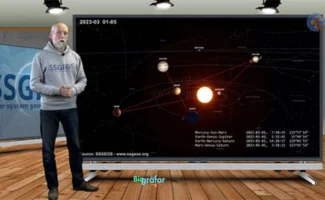Frank Hoogerbeets: Probing the Depths of Earthquake Forecasting
Introduction
Diving into the intriguing journey and contributions of Frank Hoogerbeets, a notable figure recognized for his unconventional methods in earthquake prediction, unveils a world of innovative approaches and insightful forecasts. His distinctive perspective challenges traditional notions, offering a fresh lens through which seismic activity is understood and anticipated. Through years of dedicated research and analysis, Hoogerbeets has carved a niche for himself in the realm of earthquake forecasting. His work stands as a testament to the potential for unorthodox approaches to yield valuable insights in understanding natural phenomena. Join us on this exploration of Frank Hoogerbeets’ life and work, and gain a deeper understanding of the complexities and possibilities within the field of earthquake prediction.
The Path to Earthquake Prediction
Embarking on a fascinating journey, we trace Frank Hoogerbeets' evolution in crafting his distinctive earthquake prediction methodology. This odyssey unveils the meticulous process through which he refines his approach, drawing on a diverse array of data sources and analytical tools. From seismic patterns to celestial alignments, Hoogerbeets ingeniously amalgamates various indicators to form a comprehensive predictive framework. Through years of meticulous research and relentless experimentation, he has sculpted a methodology that challenges conventional norms in earthquake forecasting.The armory of tools at Hoogerbeets' disposal is as different as it's sophisticated. Cutting- edge technology, coupled with a keen logical eye, allows him to sift through immense volumes of data, connecting subtle correlations and patterns that avoid traditional methodologies. Also, his interdisciplinary approach encompasses a wide range of scientific disciplines, from seismology to celestial mechanics. This amalgamation of methodologies culminates in a predictive system that constantly evolves, adapting to new discoveries and technological advancements.Hoogerbeets' journey is a testament to the boundless potential of innovative thinking and the power of interdisciplinary collaboration. Through a tapestry of insights gleaned from diverse fields, he continues to push the boundaries of earthquake prediction, offering a unique perspective that sparks dialogue and debate within the scientific community. Join us in this exploration of Frank Hoogerbeets' remarkable odyssey in seismic forecasting


Controversies and Skepticism
Scrutinizing the various critiques and reservations surrounding Frank Hoogerbeets’ earthquake predictions unveils a complex narrative. While some within the scientific community remain skeptical, others engage in rigorous examination and constructive discourse. Hoogerbeets’ unconventional approach, rooted in celestial alignments and seismic patterns, often invites both curiosity and skepticism.
Critics assert that his methodology lacks empirical validation and stands outside established seismic forecasting paradigms. They emphasize the need for comprehensive, peer-reviewed studies to substantiate his claims. Additionally, concerns are raised about potential false alarms and the implications of widespread public dissemination of his forecasts.
Conversely, proponents argue that Hoogerbeets’ unorthodox methodology offers a fresh perspective, potentially uncovering novel insights into seismic activity. They advocate for open-minded examination and collaborative research efforts. Some scientists commend his dedication to advancing earthquake prediction methodologies, emphasizing the importance of exploring diverse approaches.
Within this dynamic discourse, it is evident that Hoogerbeets’ work sparks a robust exchange of ideas within the scientific community. While skepticism remains, it is met with an equally fervent drive for exploration and inquiry. This ongoing dialogue underlines the inherent dynamism and diversity of perspectives within the field of earthquake prediction
Early Years and Influences
Embarking on an exploration of Frank Hoogerbeets’ early life, we unravel the pivotal moments and experiences that ignited his fascination with seismic phenomena. These formative years laid the foundation for his enduring dedication to understanding and predicting earthquakes. From childhood curiosities to influential encounters, each chapter in Hoogerbeets’ journey contributes to the intriguing tapestry of his expertise in seismic activity. This narrative not only provides insights into the individual behind the seismic forecasts but also sheds light on the unique blend of influences that forged his unconventional approach. Join us in this captivating journey through Hoogerbeets’ formative years, and discover the origins of his remarkable journey in unraveling the mysteries of earthquakes.
A Different Perspective
Frank Hoogerbeets' approach to earthquake prediction represents a departure from conventional scientific paradigms. His methodology, which incorporates celestial alignments and lunar influences, challenges established norms in seismology. While traditional earthquake forecasting relies on geological data and plate tectonics, Hoogerbeets introduces an unconventional dimension by considering cosmic factors.Hoogerbeets contends that celestial phenomena, such as planetary alignments, can influence Earth's tectonic activities. He posits that specific geometric configurations of celestial bodies may trigger seismic events. This perspective diverges from mainstream seismology, prompting both intrigue and skepticism.Critics argue that the empirical evidence supporting Hoogerbeets' theory is limited, emphasizing the need for rigorous scientific validation. They stress the importance of replicable experiments and peer-reviewed studies to substantiate his claims. Skeptics also express concern about potential false alarms that could arise from relying on non-traditional forecasting methods.Despite the skepticism, Hoogerbeets' approach opens a new avenue for discourse within the scientific community. It invites researchers to reconsider established frameworks and explore alternative perspectives in the pursuit of understanding seismic activity. This divergence of viewpoints exemplifies the dynamic nature of scientific inquiry and the continual quest for innovative approaches to complex phenomena.
Data and Methodology
Frank Hoogerbeets relies on a multifaceted approach to generate earthquake forecasts, drawing from a variety of data sources and employing unique methodologies. His process involves analyzing celestial alignments, lunar positions, and other celestial events to identify potential patterns that may influence seismic activity on Earth.One of Hoogerbeets' key data sources is the precise data on celestial events, which he cross-references with historical earthquake data to discern potential correlations. By scrutinizing the timing and alignment of celestial phenomena, he attempts to identify periods of heightened seismic risk. This approach, while unconventional in the realm of earthquake prediction, underpins Hoogerbeets' methodology.Furthermore, he monitors global seismic networks and agencies for real-time data on seismic activity. This information is crucial in validating and refining his forecasts. Hoogerbeets combines this data with his celestial analysis to make predictions about future earthquake events.It's important to note that Hoogerbeets' methods have faced skepticism and criticism from mainstream scientific communities, who typically rely on more traditional seismological approaches. However, his dedication to exploring alternative methods underscores his commitment to advancing earthquake prediction techniques.
The QuakeWatch Platform
The QuakeWatch platform stands as the cornerstone of Frank Hoogerbeets’ earthquake prediction endeavors. It serves as primary conduit through which he disseminates forecasts and interacts with the public. This online platform provides real-time updates on seismic activity worldwide offering users access to information about potential earthquake events.
Through QuakeWatch, Hoogerbeets shares his forecasts, which are based on his unique methodology that incorporates celestial alignments and lunar influences. The platform presents an interface that allows users to explore data and predictions, fostering a community of individuals interested in earthquake forecasting.
Users can access various features on the QuakeWatch platform, including maps displaying recent seismic events and the forecasted periods of heightened earthquake activity. Additionally, Hoogerbeets utilizes the platform to communicate with his audience, addressing inquiries and providing additional context for his predictions.
While the QuakeWatch platform has garnered attention and a dedicated following, it has also faced scrutiny from skeptics who question the scientific validity of Hoogerbeets’ approach. This platform, however, exemplifies Hoogerbeets’ commitment to transparency and public engagement in the realm of earthquake forecasting.
Overall, the QuakeWatch platform represents a distinctive approach to earthquake prediction, one that invites public participation and challenges conventional scientific norms. Through this platform, Hoogerbeets endeavors to increase awareness and understanding of seismic activity, sparking conversations and encouraging further exploration of this complex phenomenon.
Case Studies
Examining instances where Hoogerbeets’ earthquake predictions corresponded with actual seismic events sheds light on the potential efficacy of his methodology. There have been cases where his forecasts closely aligned with subsequent seismic activity, garnering attention and fueling both interest and skepticism.
In certain instances, Hoogerbeets issued earthquake forecasts indicating specific regions and timeframes of heightened seismic risk. Subsequently, earthquakes occurred in proximity to the forecasted locations and within the projected timeframes. These instances have led some to consider the possibility of a correlation between celestial events and seismic activity.
However, it’s essential to approach such correlations with a critical perspective. The scientific community, as a whole, remains cautious about attributing earthquake prediction success solely to celestial alignments. Factors such as coincidences, statistical outliers, and the unpredictable nature of earthquakes must also be considered.
This nuanced evaluation emphasizes the complexity of earthquake prediction and the ongoing debate surrounding unconventional methodologies. While instances of alignment between Hoogerbeets’ forecasts and actual events are intriguing, they warrant further scientific scrutiny and validation. It’s an area that continues to provoke discussion and inquiry within the field of seismology and earthquake forecasting.
The Future of Earthquake Prediction
Delving into the realm of earthquake forecasting, we examine both the prospects and hurdles in this field, drawing insights from none other than Frank Hoogerbeets. His unconventional approach to seismic prediction has opened up new avenues for exploration.
One of the potential advancements lies in the integration of diverse data sources and cutting-edge technologies. Hoogerbeets’ methodology emphasizes a holistic approach, incorporating various indicators beyond conventional seismological data. This inclusive approach may hold the key to more accurate and timely earthquake forecasts.
However, it’s important to acknowledge the skepticism and resistance faced by Hoogerbeets and others who venture into non-traditional prediction methods. The scientific community often demands rigorous validation and peer-reviewed studies, which can be challenging to achieve in this innovative yet contentious field.
Despite the challenges, the work of visionaries like Hoogerbeets prompts critical discussions and pushes the boundaries of earthquake forecasting. As technology and our understanding of seismic activity continue to evolve, so too will the potential for more effective and reliable prediction methods. Hoogerbeets’ contributions serve as a catalyst for this ongoing journey towards a safer and more prepared world.
Conclusion:
Summarizing on an enigmatic journey, Frank Hoogerbeets has redefined earthquake prediction. His unconventional methods have stirred both intrigue and skepticism within the scientific community. Through platforms like QuakeWatch, he engages the public in seismic awareness. While criticisms persist, Hoogerbeets’ work challenges established norms, pushing the boundaries of seismic forecasting. The evolving landscape of earthquake prediction gains new dimensions through his contributions. However, the journey is not without its hurdles, as skepticism from traditional quarters prevails. Despite this, Hoogerbeets stands as a trailblazer, propelling seismic forecasting into uncharted territory. His work sparks vital conversations and shapes the future of earthquake preparedness.